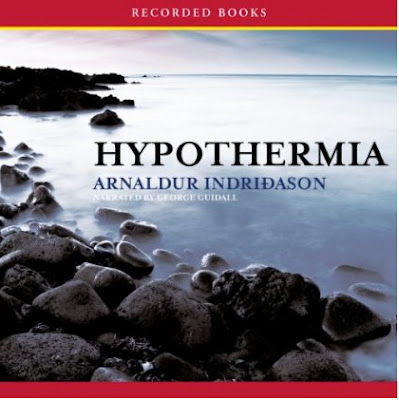I found the long, hot days of August conducive to reading.
It was post-apocalypse month at Capewood Manor. This is the first of several novels I read detailing events after something horrible happens. This one seems, on the face of it, to be your average virus apocalypse but with a twist. William Sandberg, former military cryptologist, gets kidnapped by some ultra-secret military operation. Secreted away in the Alps somewhere, Sandberg is given the task of solving a mysterious code. He gradually comes to understand that the code is actually written into man's DNA and tells the entire history of humanity, up to sometime in the near future when everything ends in fire. As a possibly man-made virus is sweeping across the world, can he decode the message and find an answer? The ending was a little too facile but it was a good read.
The latest in a series of mystery novels set in, of all places, Reykjavik, Iceland. Detective Erlendur Sveinsson, is given the task of investigating a suicide. It looks like an open and shut case, a young woman was found hanging by the neck in her summer cottage. Erendur closes the case. But his suspicions begin to be aroused when a friend of the dead woman tells him that there is no way her friend would have committed suicide. Since Erlendur has heard this story many times he's not much moved, but almost in spite of his belief about the case, he looks further. He starts pulling threads that are almost invisible and gradually the story starts to come apart and he discovers an elaborate murder plot. This was a pretty good story and an interesting look in at Icelandic culture, about which I knew nothing.
It's some 10-15 years in the future and the United States finds itself in the role of the world's policeman in order to protect American interests at home. This is possible due to advancements in robotics and remote control. Robots do all the soldering around the world, remotely-controlled by American servicemen in hardened locations far from the battlefield. Then someone blows off enough nukes in the upper atmosphere to produce an Electro-magnetic pulse (EMP) large enough to wipe out electronics around the world. That's when the Tin Men find out they weren't remotely controlling their robots but that the consciousnesses were actually residing in the robot bodies. A squad of Tin Men located in Syria begins a desperate journey to Germany to be reunited with their bodies.
The best-selling novel of 1927 tells the story of Elmer Gantry, who learns as a young man that he loves being the center of attention and that in 1910, a good way to do that is to become a preacher. He's got the magnetism and speaking voice that can do the job. He's not a particularly good Christian person. He drinks too much, has too much of an eye for the pretty girls and smokes, but he's very good at keeping all this from his flock. Sinclair Lewis uses this as a vehicle to ridicule the church (and other institutions of the time). Every time Gantry almost gets exposed, he vows to be a better man. These vows usually last until the next time he sees a well-turned lady's ankle. You may know the 1960 movie with Bert Lancaster, which has a considerably different ending.
Neal Asher writes the hardest of hard science fiction. He has a number of books in the "Polity Universe", a future time when a galaxy of humans is benignly run by group of artificial intelligences. This is the beginning of a new series in that universe mostly about an AI, produced during a war with a dangerous alien race. Rushed into production, the AI has a fault which renders it insane.
This book, written in 1955, is, according to IO9.com, one of the first novels to deal with the aftermath of nuclear war. It's some 80 years after the war and the United States has settled into a roughly early 19th century environment. All the large cities had been destroyed and the country now is largely rural. In fact, an amendment to the US constitution prohibits any towns larger than a population of 1,000 and 200 buildings. Lee and his cousin Esau, live in Piper's Mill, a small Mennonite community in Ohio. They love their grandmother's stories of a time before the Destruction, even though she's not supposed to be telling such stories. They dream of escaping their small town existence and escaping to the almost mythical Bartolstown, where pre-Distruction technology is said to still exist. The story is more a coming-of-age allegory than a realistic description of the long term effects of nuclear war but still a good representation of the genre.
The people of Black Mountain, North Carolina live a Norman Rockwell type of existence. A small town tucked into the mountains, they have all the conveniences of modern life, but without the crime, air pollution and hustle of the big city. Then one day their phones, their cars, their CD players and every electronic thing they own stops working. An EMP has turned America into the 19th century. It sounds like the home-side of the Tin Man story. How can a small American town face the deaths, the refugees coming their way, the lack of food while trying to remember that they are Americans and not savages. Forstchen is mostly known for his works on military history and the main character seems to be largely based on himself. A pretty good read. I think I'm going to stay away from the apocalypse for awhile.
Subscribe to:
Post Comments (Atom)











No comments:
Post a Comment